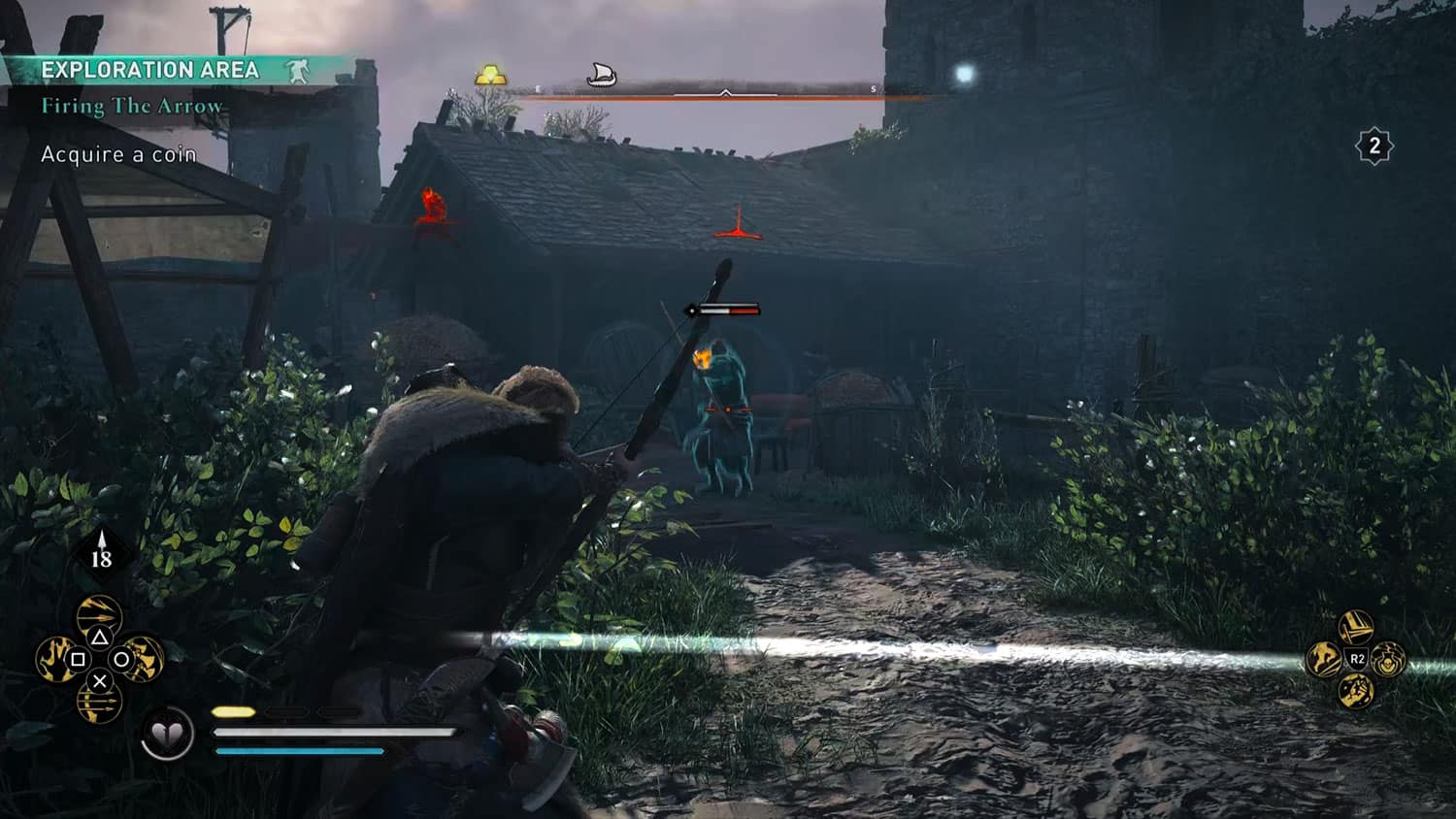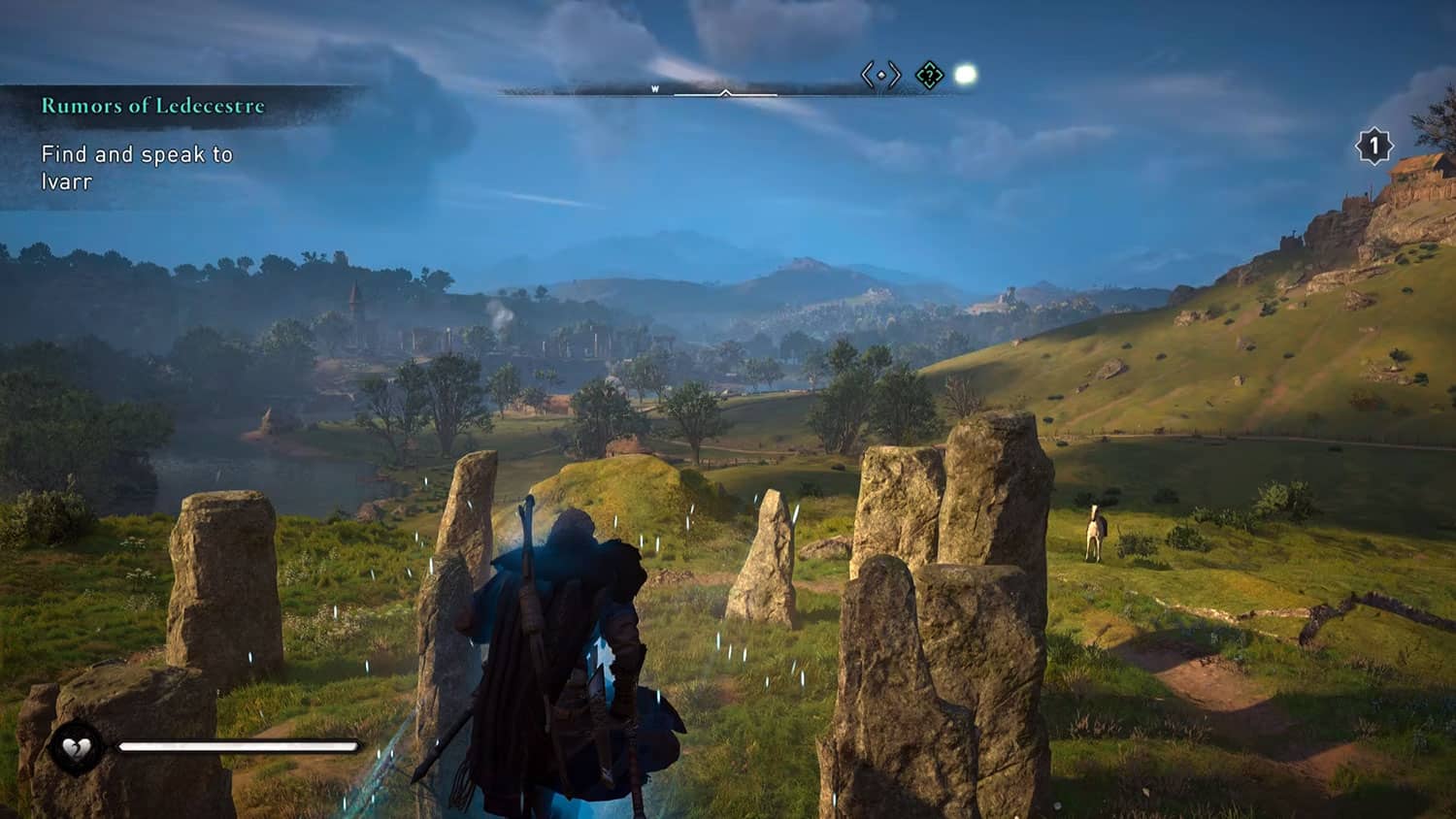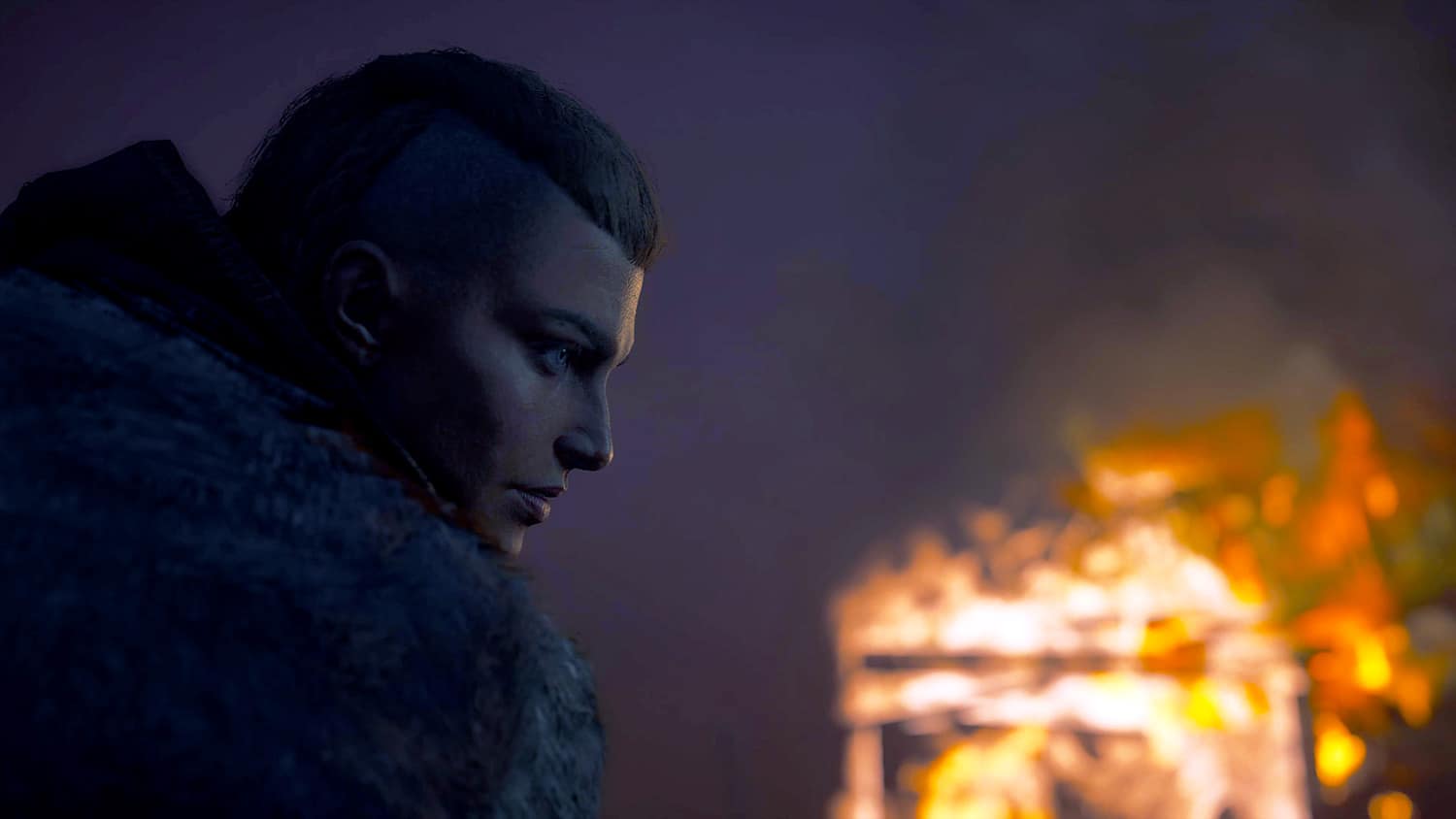What ho vikingrs! I’m a long time Assassin’s Creed fan, having played most of the games from the first iteration until now. So I was thrilled to get my hands on the new Valhalla game. Not only that, it’s the first game I’ve played on PS5 (hello fast load times).
I’m about 33 hours into Assassin’s Creed Valhalla after playing it this past week. But is it worth your precious trinkets?
Read on my drengrs, for my detailed review of Assassin’s Creed: Valhalla.
Story and Narrative
Valhalla follows the story of Eivor, a Viking warrior who survives a traumatic childhood incident to grow up into one of the Raven Clan’s strongest Vikings. After a killer opening to the game, you spend a brief period in Norway (read tutorial level), before it’s off to England with you for a new life with your clan. It’s up to Eivor to negotiate new alliances, settle her people, and along the way, get rid of the manipulative templar influence in England.
As a female gamer, I really appreciate the choice to put playable women in the Assassin’s Creed universe, because it’s far more enjoyable for me to be a badass chick. Evie Frye, Cassandra, and now Eivor, have all been fascinating characters to play. In an interesting decision for Valhalla, you can choose to play Eivor as male, female, or a mix of both depending on the strength of the signal from the Animus. The women in this game are well represented – they’re strong, respected, and aspirational – plus, appropriately clothed in some excellent Viking fashions.

What I like most about Valhalla is that it gets the Assassin’s Creed tone right. I’ve felt the last two games – Origins and Odyssey – were tonally shifting away from the previous gritty Syndicate (my personal favourite Assassin’s Creed game). The humour is still there, but there’s an underlying seriousness to Eivor’s mission and character. The beautiful environment design, particularly the lighting and fog elements, reflects the eerie mood of historical England.

Valhalla feels like playing the TV show Vikings in video game form, and although the game is set after the period of the show, the sons of Ragnor do make an appearance. And you’ll appreciate the tonnes of snakes in merrie old England. Nothing better than setting those danger noodles on fire from afar with a burning arrow.
Assassin’s Creed: Valhalla Gameplay

I’m playing through Valhalla on hard difficulty for a good challenge – like all RPGs, Assassin’s Creed gets a bit easy the more you level up. And while the first few levels with low gear is brutal, the gameplay has evened out. As with all difficult playthroughs, you’ll be using that dodge and parry button A LOT. (Or just sneaking around taking everyone out.)
Now it’s hard not to compare Valhalla to that other masterpiece of Norse axe throwing, God of War. And while Assassin’s Creed’s double wielding axe/arrow shooting Eivor is a lot of fun to play, it doesn’t particularly build anything new on Odyssey’s system of gameplay. It’s similar to Odyssey and Origins with the light/heavy attacks, and specialty attacks built with adrenaline.
I am glad to see the return of the hidden knife, and along with it, the Assassin’s Guild. Valhalla has carried over one of the most enjoyable parts of Odyssey’s gameplay – taking out a branching and shadowy group of cultists.

While you’re encouraged to take these cultists out as soon as possible, a lot of the content and exploration is gated by power levels. These are built up by completing world events, quests, and of course, levelling up. It doesn’t feel like a grind, but the main narrative does feel fairly linear so far.
World events
What I am enjoying about the narrative design is how the world events work – rather than giving you a lifetime’s worth of quest markers, many of the world events are fairly contained, and require you to puzzle things out rather than be told “go here, collect this”. Listening to the characters and reading lore suddenly becomes more important, rather than an afterthought.

These events feel naturally integrated into the world, but perhaps don’t reflect the moral arc of the world as much as a game like Origins integrated Bayek and Egypt’s arc of grief and oppression into each quest, no matter how small. Still the best written Assassin’s Creed game IMHO.
There are several other types of minor puzzles littered around the world, something I’m glad to see return from previous games. I miss the extended climbing puzzle solving of the early Assassin’s Creed games with Ezio, but there are some interesting climbs in the form of glitches in the matrix.
Apart from some pretty trippy experiences after eating a few mushrooms, I’m interested to see if these puzzle markers pay off as gear. These puzzles don’t have a lot of context for them – you might find this frustrating or enjoyable, depending on how you like to play video games.
Added to this, the system of allegiance building is extended in Valhalla, in a way which feels like what could be a very good board game. However, the allegiances are relative to quest outcomes, so it’s less about holding and maintaining the balance of power as in other more strategic games.
Raid on, vikingrs!
I’m glad that the Sparta vs Athens battles of Odyssey have been replaced by raids – although Valhalla is clear, as with all Assassin’s Creed games, that civilian deaths will not be tolerated. You can be a Viking, but not too Viking, otherwise you’ll be desynchronised. I appreciate this – the risk that Assassin’s Creed has always run is glorifying murder, and I think this is a very fair and effective way of dealing with it.
The supplies got through these raids enable you to upgrade your colony. Upgrading the buildings in this area opens up side quests and other stories, which is a really fun way to build relationships with characters and expand both skills and equipment.
Environment design and lighting

I’d be remiss in not mentioning the environment design and lighting of the world. Assassin’s Creed has long set the benchmark for beautiful environment design, and Valhalla is no exception. It’s one of the major reasons I play this franchise – to see how they’ve rendered these historical locations, and also as a history buff, how they’ve compressed the historical locations into a world that still feels real. The details in the longhouse, on the clothing, in the leaves on trees, and the weather patterns, are all beautifully rendered in 4K. As the first game I’ve played on PS5, I’m suitably impressed.
Of particular note is the snow – whoever did the snow and ice effects deserves a promotion – the way you walk through it, the sound it makes, and even the rime of ice on the ground in the morning is beautifully done.
What’s not so good?
Buggy McBugface
Since I’m playing a relatively early release, I’ve found the game to be a bit buggy. I bought my copy after the first big patch, but I’ve been more amused than anything else to find a couple of bugs while I’ve been playing. Apart from having a good laugh and getting desynchronised, they haven’t affected me too badly, and I’ve been able to reload easily.
Control remapping
My other bugbear is with remapping controls. While there are a lot of great options in the menus – you can choose what level of violence and nudity you’d like to see, and plenty of accessibility options, all of which are excellent moves by Ubisoft – BUT, please for the love of Odin, could you have given me the two control options as presets. I’m talking about classic Assassin’s Creed controls. As someone who has grown up with the games, R2 will always be parkour.
Unlike Odyssey which offered you a set of pre-mapped controls for classic Assassin’s Creed, you need to map your own controls and puzzle it out if there’s a conflict – which becomes problematic when you kill people accidentally with the x button in a town. Not as bad as Red Dead Redemption, but takes a bit of play to find how the button conflicts will affect you. And I can’t save my button layout, which means when my friends come over to play they’re very confused…
Where to from here?
My final critique is more of a question – Assassin’s Creed is a solid franchise, but where does it go from here? It has proved it is capable of change, but how do you take those beloved world events and push them to the next level? And how do you make a game that is capable of brilliance reach that consistently? Well, that’s a whole other post, but I have some ideas.
For me, Assassin’s Creed is the ultimate comfort gaming. The enjoyably ridiculous premise of stopping a shadowy organisation of Templars trying to find other worldly relics through the ages, tied together loosely under the guise of defeating the Abstergo corporation in the near future, justifies running around brilliantly executed historical locations and assassinating period villains. If you’ve played previous Assassin’s Creed games, then Valhalla isn’t going to surprise you, but it’s a solidly executed and beautifully rendered instalment in an extremely reliable franchise.
Plus, Vikings.

Share your thoughts